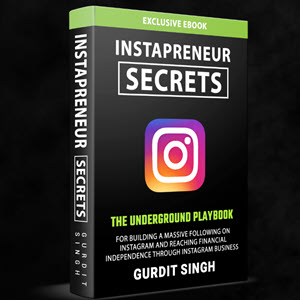Social Media Release: Evolution

I remember the day I discovered SMPR (Social Media Press Release) concept on this very blog. Ironically, at the time, the high-tech, social concoction had to be downloaded as a pdf document – a file format we would later scoff at as “social media savvy” PR Pros. Nevertheless, it was revolutionary in nature.
At the time, I was knee-deep in development of my little pitch machine, but the name of his template stuck with me. I had already created this cool way for PR people to package up all their content – like an online press kit – but this gave it context and made it sharable. So, I dropped the “p” for “press” and called our kit the Social Media Release. From there, the SMR was no longer just a twinkle in papa Defren’s eye.
The SMR Grows Up
I’m not shy about proclaiming PitchEngine as a critical player in the adoption of the SMR. In fact, in less than two years, PitchEngine users created and shared more than 90-thousand of them. (More than all other services combined).
The reason? We made it about flexibility, function and social media. We didn’t try to retrofit the press release with social media glitter (ahem, wire services). Savvy PR pros understand it’s not about “share-buttons” – it’s about writing for your audience and connecting. Simply put: The press release is NOT social. It’s this premise that built our core business and put us on the trajectory we’re on now. A path we think will reshape the industry in the process.

Why PitchEngine? Why didn’t other platforms emerge and why can’t I just make an SMR on my blog? I think this was Todd’s orignal intention – sort of an open source template that people could go and build. But what got overlooked was search. We call it “Co-op SEO” and it’s the reason PitchEngine search authority grew so big, so fast. You can’t get authoritative back links to your website or your blog easily and you need them to drive your Page Rank within Google. But through PitchEngine, brands were able to get indexed well and almost immediately, which also provided valuable juice to their own domains.
This past year, I’ve had the opportunity to sit down and visit face-to-face with PR professionals from many industries. I’ve been encouraged by their level of understanding and enthusiasm for what’s happening. Most see through the marketing speak and grasp what makes content truly social. For example, pitching a journalist or blogger a story idea is one thing, but writing for them is another. If you’re still doing this, you’re wasting time. Which raises the bigger question: Why are we writing press releases? Is it driving our bottom line as a company, or simply justifying our position in the marketing process? In this new age of direct-to-consumer communication, does the press release have a place?

Pitch: The SMR Evolved
Yes, Tom Foremski. Yes, Peter Shankman. The traditional press release is dead! At least, to us it is. I call it “word doc PR” and it’s as played-out as a Christmas carol in June.
Does your boss still require it? Just include it as an attachment if you have to. Or send it through a traditional service and embed a link to something much, much better. Whether you’re pitching a 3-billion dollar product to the world, or telling your neighbors there’s a garage sale on Tuesday, you have a story to tell. You should publish your own story, not rely on someone else to tell it for you. This defines the Pitch™, the new SMR.
The Social Media Release has evolved beyond the PR process. It’s now a “mobile” component to your brand’s story telling.
Unlike your website or blog, which is on an island, the Pitch travels around the web leaving people a window into your brand.
It spreads your net wider, enabling brands and businesses to:
- Get found on search engines (via new SEO technology)
- Integrate it with their website (via embedded newsroom, feeds)
- Interact with their social networks where they can engage with friends, fans and followers directly
The content has to be conversational and engaging to the reader, who nowadays is probably not media. Brands like Carl’s Jr. realized this early on and have deployed PitchEngine for just about any pitch their 18-24 year-old demographic would enjoy reading or watching. (Like this one.)
The Country Music Association uses the newsroom functionality to keep their millions of fans apprised of every detail they feel “pitch worthy.” (Here’s their PitchEngine Newsroom).
It’s not just a shift away from the AP-format press release. It’s a shift away from the stuffy, old process entirely.
Imagine the ultimate story that would be written about you in your favorite magazine. Now, write it. Include all the assets the magazine would and then, publish it yourself. If it’s compelling, your consumers or potential customers will identify with it. The goal is to drive sales, traffic, attendance, etc., It’s not to “gain eyeballs.” Those days are toast.
What if my boss still requires press releases?
They most likely will. But continually question their goal and then, just include it as an attachment if you have to. Or send it through a traditional service and embed a link to something much, much better and more engaging.
Whether you’re pitching a 3-billion dollar product to the world, or telling your neighbors there’s a garage sale on Tuesday, you have a story to tell. You should publish your own story, not rely on someone else to tell it for you. This defines the Pitch. There will be good ones, and there will be bad ones – we’re all about enabling you to pitch whatever it is you want to pitch in a concise, cool and more conversational way.
A People-Powered Future
As you can see, the Social Media Release has come a long way. No matter how you define it today, it shouldn’t be compared to a traditional press release. It takes creativity, good storytelling and a bit of ‘umph’ from your social networks to make it sing, but when it does, it’s like magic. (Really, just ask these people).
One of the biggest successes of the Social Media Release has been its ability to level the playing field for agencies, freelancers and entrepreneurs themselves. It used to be that spending lots of money equaled “exposure” but, that veil has dropped. Companies large and small are now able to get their word out with search engine optimized releases that are poised for viral uptake. In some cases, at no cost.

There isn’t an “easy-button” in PR anymore. Maybe it’s just me, but what used to be “simultaneous, push-button distribution” now sounds a lot like “spam.” Take some pride in your skills and show your clients why YOU are necessary. They will see passed the tools. How are you driving their business? If you’re not, they can probably tell their own story, better.
Authenticity isn’t just a buzzword for the new media age – it’s a reality. If you’re looking for templates, processes or metrics to do the work for you, you’re in trouble. There are simply too many scrappy freelancers, agencies and startups doing amazing work, and for peanuts compared to the rates once compiled from agencies by the hour. Dig deep and make sure this is where you want to be. If it is, you should be excited by what’s happening around you.
Continue reading here: Pr Measurement Formula Fails?
Was this article helpful?


